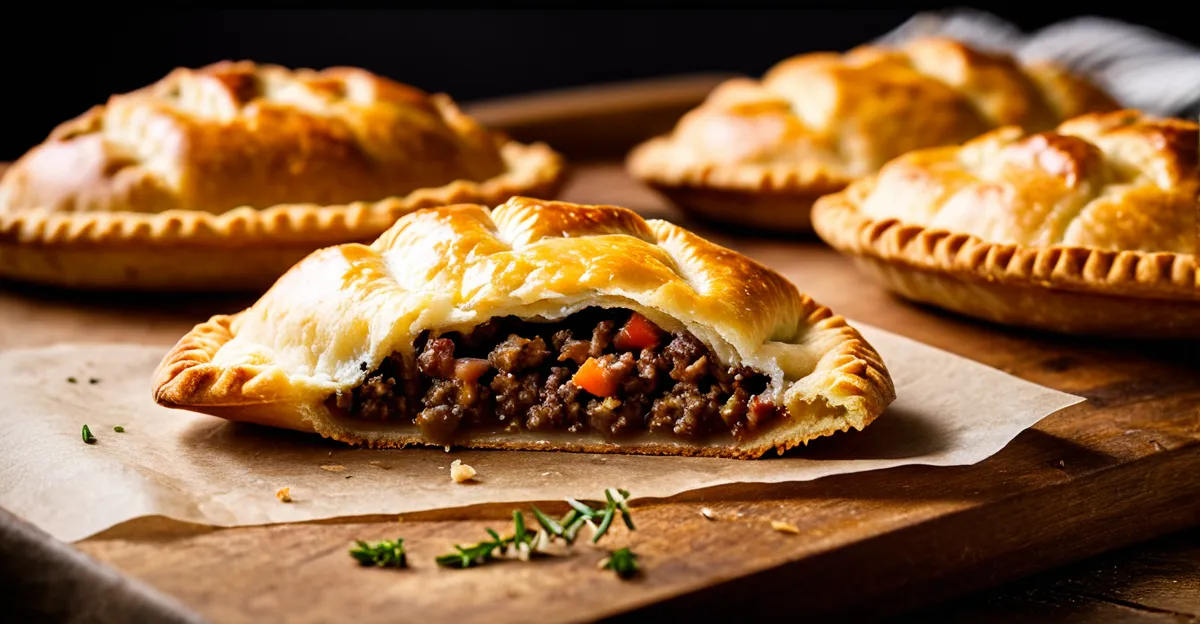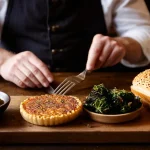Essential Ingredients for a Classic Cornish Pasty
The classic Cornish pasty ingredients are fundamental to achieving the true taste and texture that define this pastry. At the heart of the traditional Cornish pasty recipe lies a simple yet precise combination: seasoned beef, diced potato, swede (rutabaga), and onion, all encased in a sturdy, golden pastry. Each component plays a vital role—beef provides rich flavor and substance, potato adds tenderness, swede offers a subtle sweetness, and onion enhances savory notes.
For an authentic pasty to be truly representative, the ingredients must be fresh and prepared in balanced proportions. Using lower-quality or non-traditional vegetables diminishes the characteristic profile Cornish pasties are known for. The importance of sourcing quality ingredients cannot be overstated; fresh beef with a good fat ratio and firm, starchy potatoes ensure the filling remains moist without becoming soggy.
Additional reading : What are the best techniques for cooking a succulent pork pie?
Attention to detail with these authentic pasty components guarantees the final product honors the culinary heritage while providing a satisfying eating experience. By focusing on these essential ingredients, anyone can recreate the genuine taste of a classic Cornish pasty.
Preparing the Pastry
A classic Cornish pasty pastry is the foundation that holds together the filling while delivering a distinctive texture. Preparing this pastry starts with the right balance of ingredients: plain flour, a quality fat such as beef dripping or butter, and cold water. The traditional Cornish pasty pastry aims to be both sturdy and tender, able to withstand baking without losing its shape or becoming tough.
Also to read : What Are the Unique Flavors of Traditional British Cuisine?
When mixing, the fat should be rubbed into the flour until the mixture resembles coarse breadcrumbs. This ensures a flaky texture once baked. Adding cold water gradually binds the dough without overworking it, preserving lightness. Resting the dough in the fridge for at least 30 minutes allows the gluten to relax, making it easier to roll out and preventing shrinkage during baking.
Rolling the dough evenly is crucial; too thick and it will be heavy, too thin and it risks breaking. Aim for about 3-4mm thickness for a balance between durability and a pleasant bite. Following these pastry making tips helps achieve a crisp, golden crust that complements the hearty filling of the traditional pasty perfectly.
Making the Filling
The Cornish pasty filling relies on precise preparation of ingredients to deliver its signature hearty taste. The first step involves cutting the beef skirt into uniformly sized cubes. This ensures even cooking and a balanced texture throughout the filling. Firm, starchy potatoes and swede should be diced into similar-sized pieces to match the beef. Onions are finely chopped to distribute their natural sweetness evenly.
Seasoning is kept simple and traditional—just salt and pepper—to highlight the natural flavours of the classic fillings without overpowering them. Over-seasoning or adding extra herbs risks deviating from the authentic pasty profile. A well-prepared traditional filling allows each component to maintain its integrity while melding into a cohesive whole.
Layering the ingredients thoughtfully is crucial. Start with a base of potatoes and swede to insulate the beef and absorb its juices. Add the beef next, then top with onions. This order aids proper cooking and flavour blending during baking.
Avoid vegetables like peas or carrots, as these stray from the authentic pasty components and can alter moisture levels. Sticking to this preparation method ensures the filling is both flavourful and true to Cornish tradition.




